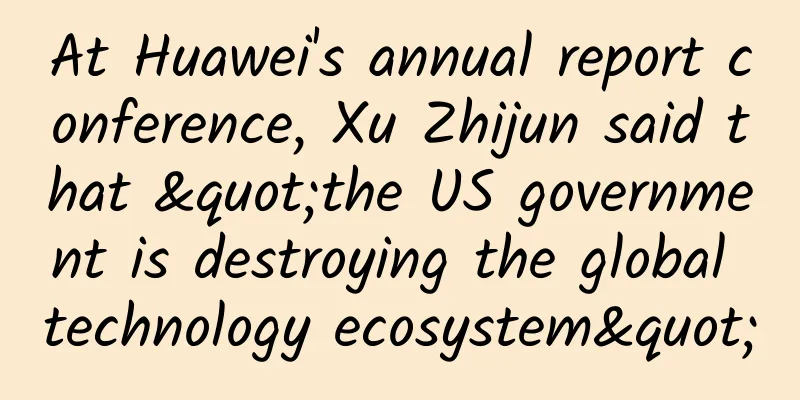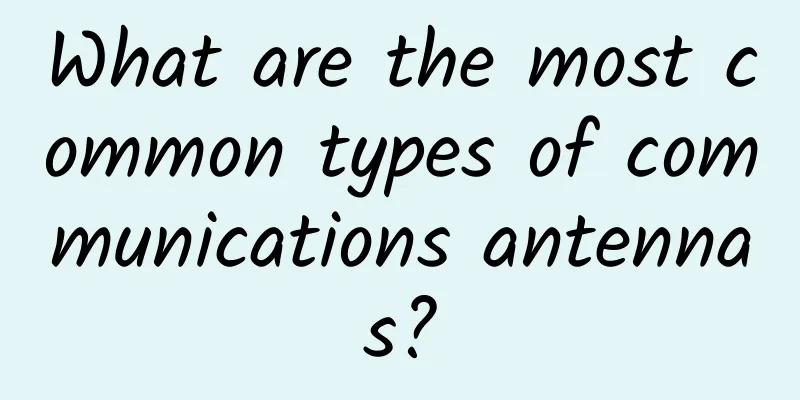Review of eight hot spots in the optical communication industry in 2021: Highlights frequently emerge under the halo of 5G

|
In 2021, digitalization has become the focus, and various industries are accelerating the integration of emerging technologies such as cloud computing, 5G, big data, and artificial intelligence into the production and operation processes of enterprises, improving operational efficiency and enabling their own transformation and upgrading. As the main artery connecting the digital world, the network allows these "fresh blood" to flow within the enterprise. Optical communications are the cornerstone of network capabilities. After experiencing fluctuations in the past two years, it has ushered in a boom development cycle. This year, the entire optical communication industry was very lively, with the joy brought by the recovery of the price of optical cable centralized procurement, the evolution and upgrading of new technologies, and the continuous "drama" of mergers and acquisitions. More importantly, with the continuous catch-up and accumulation, China's position in the optical communication industry chain has become increasingly prominent. For this reason, C114 has made a simple review and counted the hot events and topics in the industry over the past year.
Optical cable centralized procurement "warms up"In the past two years, the nationwide FTTx deployment in China's optical fiber and cable market has been basically completed, and the FTTH/B user penetration rate in some cities has even exceeded 100%. The demand for optical cables by the three major domestic operators has slowed down significantly, and the supply and demand relationship has changed, bringing huge challenges to optical fiber and cable manufacturers. In 2021, when China Mobile released the centralized procurement of 143.2 million core kilometers of general cables, both the centralized procurement quantity and the bidding rules' guidance on healthy competition gave confidence to the entire industry. The final centralized procurement results were in line with expectations, presenting a situation of "increasing both quantity and price". However, the increase in both quantity and price of this centralized procurement of general cables is by no means the price increase caused by the explosion of demand three or four years ago. Instead, it is the optimal solution jointly made by both supply and demand sides for their own development after the market changes and the price increase of downstream raw materials in the past two years. This is what really brings warmth to the development of the industry. We hope that with the warmth brought by this centralized procurement, the optical fiber and cable industry will truly realize the spring blossoming. For the entire optical fiber and cable market, due to the huge domestic demand, it has become the vane of the world's optical fiber and cable prices. CRU data shows that since 2014, China's demand for optical fiber and cable has accounted for about 50% of the world's total, while China's optical fiber and cable supply has accounted for nearly 60% of the world's total. CRU directly said that "the Chinese market 'determines' the global optical fiber and cable prices." Gigabit speed increase, 25G PON vs 50G PON causes controversyThe 2021 Government Work Report proposed to increase the construction of 5G networks and gigabit optical networks and enrich application scenarios. Subsequently, the Ministry of Industry and Information Technology officially released the "Dual Gigabit" Network Collaborative Development Action Plan (2021-2023), with the goal of basically building a "dual gigabit" network infrastructure that fully covers urban areas and qualified townships within three years, and achieving the general "gigabit to the home" capability of fixed and mobile networks. As for gigabit optical networks, data from the Ministry of Industry and Information Technology show that as of the end of November 2021, the total number of fixed Internet broadband access users of the three basic telecommunications companies reached 535 million, of which the number of fixed Internet broadband access users with access speeds of 1,000Mbps and above reached 33.86 million, a net increase of 27.46 million households from the end of last year. While operators are accelerating the large-scale deployment of gigabit optical access networks based on 10G PON, the standards for next-generation optical access network technologies are also being promoted at full speed. The current debate focuses on the technical route selection of 25G PON led by Europe and the United States and 50G PON led by China. There are different opinions on which is better. Julie Kunstler, senior principal analyst of broadband access at Omdia, believes that the next-generation PON ecosystem is strong enough and there is market space for both. The submarine cable landscape has changed, and Internet companies have begun to dominate Once upon a time, submarine cables were mainly built by a consortium of operators, and Internet companies rented and purchased bandwidth. Today, according to data from research firm TeleGeography, Google is in the lead in submarine cable investment, followed by Meta (formerly Facebook), followed by companies such as Amazon and Microsoft. Many large submarine cable systems jointly invested by telecommunications companies and Internet companies now rely on initial capital injections from Internet companies. TeleGeography predicts that $8.1 billion worth of new submarine cable systems will be put into use between 2020 and 2022, of which about $2.3 billion will be invested in trans-Pacific routes. However, TeleGeography analyst Shermaine Yung pointed out in her blog post that since the US government refused to grant a license to the PLCN submarine cable due to so-called security issues, it has triggered a series of chain reactions, disrupting the trans-Pacific submarine cable market. Chinese optical module manufacturers dominate the top 10In 2021, LightCounting, a well-known market organization in the optical communications industry, announced the changes in the TOP10 suppliers in the optical module industry over the past 10 years. In 2010, there was only one Chinese optical module supplier, WTD (Wuhan Telecommunications Devices Co., Ltd., which has merged with Accelink Technologies, also a subsidiary of Wuhan University of Posts and Telecommunications), which ranked 9th. In 2016, three Chinese optical module suppliers were on the list, namely Hisense Broadband ranked 2nd, Accelink Accelink ranked 3rd, and Innolight ranked 7th. In 2018, there were still three Chinese optical module suppliers on the list, but their rankings were greatly advanced. They were Innolight ranked 2nd, Hisense Broadband ranked 3rd, and Accelink ranked 4th. In 2020, the TOP10 list was dominated by Chinese optical module suppliers, including InnoLight Technology at No. 2, Huawei at No. 3, Hisense Broadband at No. 4, Accelink at No. 8, Eoptolink at No. 9, and HGG at No. 10. Silicon photonics continues to be popular, 800G optical modules are now availableSilicon photonics has been the most discussed hot technology in recent years, and 2021 is no exception. LightCounting pointed out that the optical communication industry is at a turning point in the large-scale application of silicon photonics SiP technology, and predicts that by 2026, the market share of silicon photonics will exceed 50%. In addition, 800G is undoubtedly the hot topic at OFC 2021. Optical module manufacturers including Hengtong Rockley and Eoptolink have successively unveiled 800G products. As early as last year, Accelink Technologies and Innolight Technology released related products and shipped them in small batches. Manufacturers such as HGZ-Shenzhen and Cambridge Technology have also deployed 800G optical module research and development. On the testing side, test manufacturers including VIAVI, EXFO, and Spirent have also launched 800G test products. Optical device industry mergers and acquisitions continue to be "dramatic" Mergers and acquisitions are not the goal, but only the means. The root of corporate longevity is products that fit the trend, which is also one of the important reasons for the continuous mergers and acquisitions in the optical communications industry. Unlike previous years, the mergers and acquisitions in the optical communications industry in 2021 are quite "dramatic". Back in 2019, Cisco announced that it would acquire Acacia for $2.6 billion, but it has yet to obtain antitrust approval from Chinese regulators. In early 2021, Acacia wanted to terminate the deal on the grounds that it had not been approved within the time specified in the agreement, but Cisco said it had been approved. In the end, the two sides negotiated and Cisco acquired the company for $4.5 billion, a 70% increase, and Chinese regulators also decided to approve the deal with additional restrictive conditions. There is also the case of Lumentum, II-VI, and MKS bidding for Coherent. Lumentum first made an acquisition offer, MKS raised the price to bid, and then II-VI also joined the acquisition battle. In the end, Lumentum and II-VI had several rounds of bidding competition, and II-VI finally won. In addition, there was the merger and acquisition "farce" of two leading testing manufacturers, VIAVI and EXFO. EXFO planned to privatize and delist, and VIAVI proposed to acquire EXFO many times, but EXFO's founder who was also the company's controlling shareholder responded every time that he would never sell. In the end, EXFO was successfully privatized. Of course, there are also mergers and acquisitions that benefit each other, such as Lumentum's acquisition of NeoPhotonics to target the 400ZR/ZR+ market. China's Tongyu Communications holds 100% of Shenzhen Guangwei to carry out diversified layout... How is the 5G fronthaul innovation solution progressing?Before the large-scale commercial use of 5G, the three major operators launched innovative 5G fronthaul solutions, including China Mobile's MWDM solution, China Telecom's LWDM solution, and China Unicom's G.metro solution based on DWDM tunable lasers. However, judging from the centralized procurement in 2021, there are not many highlights. The most purchased solution is the mature CWDM solution. China Mobile, which has the strongest appeal in the industry chain, has only a small number of applications in a few provinces. Although there is no substantial scale procurement, the three major operators are still working hard to promote their own 5G fronthaul standards. The entire industry chain is also actively cooperating with operators' fronthaul innovation solutions. Taking China Mobile as an example, it has worked with the industry chain to create products covering chips, modules, equipment, and control systems. In particular, Keda Hengxin and China Mobile Research Institute jointly released a 25G top-tuning chip for 5G fronthaul, realizing the localization and independent control of 25G MWDM optical chips. Is 400G backbone transmission ready?400G backbone transmission, a seemingly ancient technology, has not yet been commercialized on a large scale. Currently, 100G is still in its prime, 800G is also on the rise, and 400G, sandwiched in between, is becoming less and less popular. Li Junjie, chief expert of optical transmission at China Telecom, described 400G transmission as "idealistic, but realistic." In Li Junjie's view, the 400G backbone transmission part is ready. In addition to the cost, there are also important technical bottlenecks that need to be overcome in the backbone long-distance transmission scenario, especially the two core bottlenecks of 400G ETH/FlexO-SR dual-rate client-side optical modules and line-side single-wavelength 400Gb/s PM-QPSK key chips and components. |
<<: FCC win clears way for massive Wi-Fi 6E upgrade
>>: Understanding Lossless Networks in One Article
Recommend
Linux common command find record
The tribe recorded some usage of the find command...
CRU: China's demand for optical fiber and cable will account for 57% of global demand in 2016
John Johnson, president of CRU China, predicted t...
Major network IT investments include 5G, smart network cards, and cloud computing
We may not be able to predict the future, but tha...
HostKvm adds Australian VPS, 40% off 2G memory package starting from $4.2/month
HostKvm has launched a new data center: Australia...
RackNerd: $89/year KVM-4 cores/8GB/100G SSD/5TB/Los Angeles data center
We often share promotional information released b...
Illustrated explanation of the past and present of four IO models
Recently, I have come to believe that when explai...
CommScope launches new access point portfolio to accelerate enterprise-class Wi-Fi 6 adoption
Shanghai, China, June 9, 2020 – CommScope recentl...
How data centers work today and in the future
The data center of the future will rely on cloud ...
Huawei's first Intelligent Computing Conference was held in Beijing. Huawei released a new intelligent computing strategy to meet the 100 billion market
[51CTO.com original article] On December 21, 2018...
2G network withdrawal has 200 million potential users, elderly mobile phones have pain points and no market
[[343834]] I have tried According to statistics f...
Home Broadband IPv6 Address Allocation Revealed
Part 01 Background In 2021, the Ministry of Indus...
Five network management trends for 2022
With the advent of the Internet era, people need ...
The road to containerized network functions
【51CTO.com Quick Translation】Service providers an...
Are you ready for network automation?
[[374510]] This article is reprinted from the WeC...
CloudCone: SC2 promotional annual payment starting at $32.94/year, free snapshot backup, Los Angeles data center
CloudCone offers several special packages for Val...









